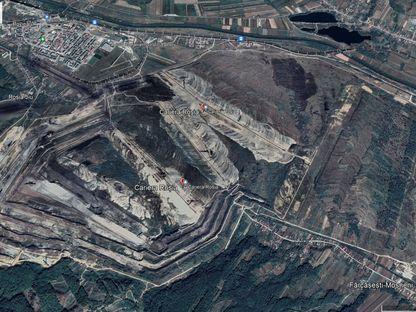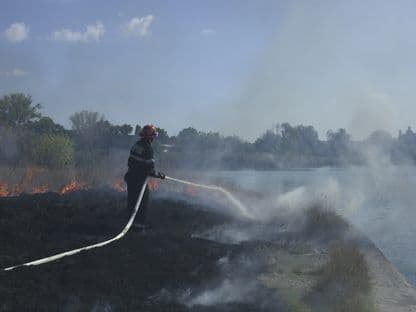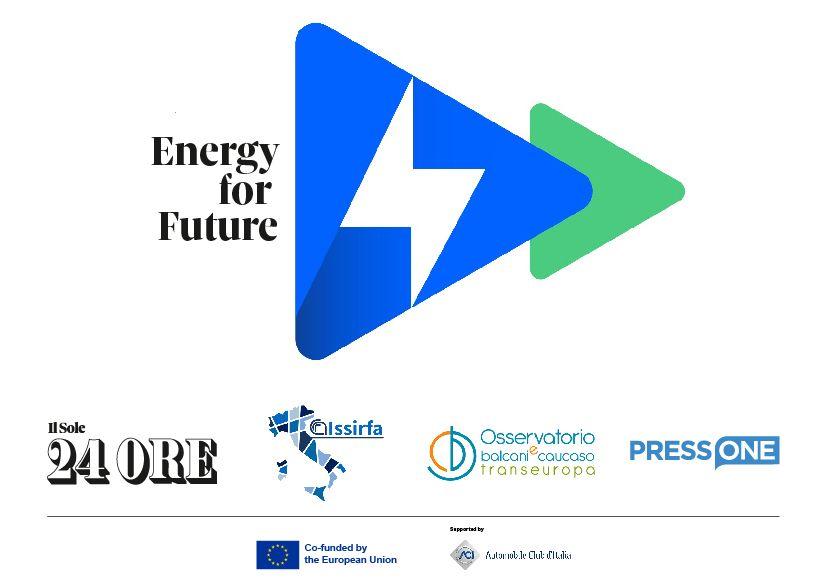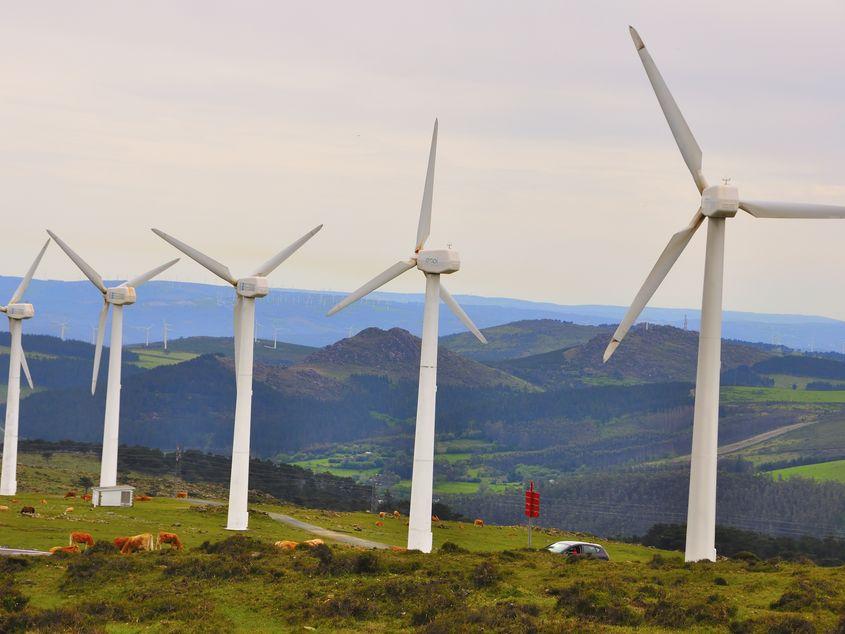
Wind farm in Brăila Photo: Sssanchez | Dreamstime.com
24/07/2024
The Wind Blows in Romania, But the State Does Not Capitalize It. Why Don't We Have More Wind Farms in the Country
Romania's wind energy potential is huge, but dying distribution grids and lack of investment mean that wind-based energy production is stalling.
By harnessing the wind potential in just five counties in the country, twice as much electricity could be produced as the country's energy consumption in 2021, for example. What's more, experts consulted by PressOne say that wind turbines could be installed on a quarter of Romania's surface area to produce green energy.
- Romania has 3 GW of installed wind power capacity. According to a study conducted by the Austrian Institute of Technology (AIT), the onshore potential is up to 166 GW of production capacity.
- Wind potential is calculated according to how much wind is blowing and the number of hours in a year that wind turbines can produce at full capacity. Based on these indicators, AIT has identified five counties in Romania with major potential for the development of wind projects: Brăila, Constanța, Galați, Ialomita and Tulcea.
- But harnessing the wind potential is linked to the modernization of distribution networks, says Victor Gavrilă, project manager at EFdeN, an NGO collaborating in the Austrian Institute of Technology study.
- No investor, he adds, will build a wind farm on an area with potential in Romania if the first point of connection to the distribution grid is 30 km away, as is currently the case in many places.
PressOne spoke to Victor Gavrilă, project manager at EFdeN, a Romanian NGO part of the Austrian Institute of Technology study, to better understand Romania's wind potential and how it can be harnessed.
PressOne: What wind generation capacity is currently installed in Romania? On days when this capacity is operating at its maximum, what can be done with that energy? Can it power, for example, a city like Bucharest? Or one the size of Brasov?
Victor Gavrilă, EFdeN: At the moment we have about 3 GW of installed capacity in wind turbines alone. And they are predominantly in Constanța county. As energy consumption in Constanța is lower than production, a large part of the energy goes to Bucharest. About 90%.
Can it sustain a city like Bucharest? It's relative, but probably for any city other than Bucharest it would be very likely. But one of the big challenges of renewables in Romania is that we have a lot of production, but the consumption is quite small in general. And we don't have ways to make use of all this wind and sun.
Mulți ne citesc, puțini ne susțin. Fără ajutorul tău, nu putem continua să scriem astfel de articole. Cu doar 5 euro pe lună ne poți ajuta mai mult decât crezi și poți face diferența chiar acum!
What are the reasons for this low consumption you are talking about?
Because Romania consumes other types of energy, such as natural gas, biomass, which is just a fancy term for wood. Per head of population, electricity consumption is about the lowest in the European Union.
That's because we no longer have industry, at least not the industry of the 90s. And because natural gas is currently cheaper. In addition, it is not so advantageous, even for prosumers, to electrify their house (i.e. to use electricity predominantly, even for heating, for example), so that they end up using electricity predominantly.
As far as prosumers are concerned, nowadays anyone who wants to can put a few photovoltaic panels on their roof. But the same cannot be said for a wind turbine, right? So how does wind power capacity develop?
When we talk about wind, we also have to take into account that the trend is the opposite of photovoltaics. Photovoltaics are at their strongest during the day, when the wind is weakest. But as night comes, the air cools down, pressure differentials build up and the wind blows stronger. Right when it's no longer photovoltaic, so it compensates.
Defrișări pentru cărbune. Cum au fost tăiate peste 470 de hectare de pădure pentru extinderea unor mine din Gorj
În ultimii șase ani, peste 470 de hectare din fondul forestier național au fost oferite de guvern, fără compensare, Complexului Energetic Oltenia (CEO) pentru extinderea sau deschiderea unor noi cariere de cărbune. În aceeași perioadă, România și-a asumat, prin PNRR, eliminarea treptată a producției de energie pe bază de lignit și huilă, precum și închiderea etapizată a minelor până în decembrie 2032.
Deși incendiile de vegetație se înmulțesc, în Europa numărul pompierilor scade
Incendiile de vegetație devin un fenomen tot mai amplu și mai grav în toată Europa, însă numărul pompierilor angajați în fiecare țară este tot mai mic.
Similarly, on a monthly level, during summer the wind blows more gently but the sun is stronger, while towards autumn-winter things reverse. The wind blows stronger, the days are shorter, and there is less sunshine.
Returning to the topic, it's good to know that the term 'prosumer' in Romanian legislation is not exclusively for solar, but for renewable sources in general. Many people wonder how efficient it would be to install a wind turbine of a few KW. However, from our observations, wind power only makes sense for industrial practices, when you're talking of MW, especially since these are installed outside urban areas and communities because they are somewhat dangerous and produce noise.
In this context, what is Romania's onshore potential when it comes to wind energy?
Un newsletter pentru cititori curioși și inteligenți.
Sunt curios
According to a study published by the Austrian Institute of Technology (AIT), in which we took part, about a quarter of the entire Romanian territory is reliable for wind energy. This would mean that we could theoretically install 500 GW compared to the 3 GW we have now.
If you subtract from that the areas of protected zones and some buffer zones against them, we get to a third of that capacity, from 500 to 166 GW. Which is a lot, because these 166 GW would produce about 350 TWh/year, given that Romania consumes about 60 TWh a year. So about 20%. There is huge potential, we have plenty of it, but the big challenge is the infrastructure, the outdated electricity grids.
According to the study conducted by AIT, five counties in Romania have a high potential for the development of wind production capacities. These are Braila, Constanta, Galati, Ialomita and Tulcea. Together, the potential of these five counties amounts to more than 98 GW. Even halved, to take into account geographical and technical limitations, the production potential in these five counties alone is high: more than 48 GW, or 122 TWh, which is double Romania's electricity consumption in 2021.
What is the time horizon for this 166 GW of wind capacity to be installed?
I don't think it will get there, because there's a lot of it. More than we need. In the report I was talking about there are three scenarios for future adoption and the weakest one says that by 2030 we would have 4 GW, that's 1 plus and by 2050, a total of 8.
A pessimistic scenario. The most optimistic one says that we could have 8 GW by 2030 and 22GW by 2050. The third scenario is a middle scenario.
The most important thing is to look, however, at the prospects for infrastructure development to be able to take all this electricity.
There are a lot of wind farm developments waiting to get the green light to connect to the grid. What do you see as the cause of this bottleneck?
Romania, depending on the area, has certain connection capacities, i.e. how much the grid can support. The problem is that these green production capacities, photovoltaic, wind, hydro, the ones we are heading towards in the future, are spread rather unevenly in Dobrogea, in the south of the country and less in Transylvania and Moldova.
For example, on the Transelectrica website there is a map, by different areas, where we see that the Dobrogea area has reached saturation, it has 0 MW of reserve, while Moldova has 1,250 MW of reserve where new production capacity can be connected. It just doesn't have that much wind potential. But it does have photovoltaic. On photovoltaic it could produce, but even there it needs financing.
The bottom line is that more transmission capacity is needed. Both within the country and abroad. Because we already have a lot of parks waiting to be connected and investors who have put money on the table, but are waiting for infrastructure. And after that, once we connect these wind turbines, it is important to have a way to consume all the energy.
How many of the major wind power capacity development projects have been developed with European funds or financial aid from the Romanian state?
Being industrial producers, who already have the financial capacity, I don't know how much they rely on European funds. For example, a producer in Constanța has built a hybrid wind and photovoltaic park. And this was 100% from its own funds. On top of that, it has also built storage capacity, which it is developing to help the grid rebalance, but also to sell energy. All the surplus from the daytime PV it will sell at night, for example.
In a previous article, PressOne spoke to renewable energy expert Corina Murafa about how Romania's first wind farms came about:
"In a first instance, the first MW installed on wind and photovoltaic in Romania were not supported by European funds, but through a support system, the green certificates. Virtually anyone who installed renewable energy in Romania and injected the energy produced into the grid had a number of green certificates, depending on the technology used. So Romania became an 'El Dorado' of renewables and that's how the big wind farms developed."
When we think about a wind farm, what are the limitations that could prevent their development in larger numbers in Romania?
The biggest is infrastructure. According to the same report by the Austrian Institute of Technology, the average distance from a wind farm to the nearest grid connection point is about 30 km. All these wind farms are connected by underground cables, and otherwise the initial investment can go up a lot, depending on the area where they are located. If they are very far away from that connection point, it doesn't make sense.
For example, if you have a flat field, where there is no agriculture or any other kind of activity, but this field is far away from any connection point to the grid, that area will remain empty, because no investor will be willing to pull hundreds of kilometers of cables.
Against the backdrop of an infrastructure that cannot support the development of wind energy production, what is the position of the Romanian state when it comes to green energy from the wind?
The authorities have recently approved the offshore law. They are now developing a methodology. However, it will be a few years before we see the first offshore turbines in the Black Sea. This is not necessarily a major issue, as we have significant onshore capacity, with many parks waiting to be connected to the grid.
In addition, the Black Sea, more than half of it, has quite deep water depths, which make it necessary to build floating turbine foundations, because you can't reach the seabed. But those floating foundations are very expensive and raise the investment about 50%, 100% more than onshore wind farms. You can double the initial investment. It's only in the West, in the UK seas, that we've seen that kind of investment. But they do it because they don't have as much land available for turbines as we do.
___
This article is published as part of the Energy4Future project co-funded by the European Union. The European Union is not responsible for the information and opinions expressed in the course of this project and article. Full responsibility for the content lies with PressOne.
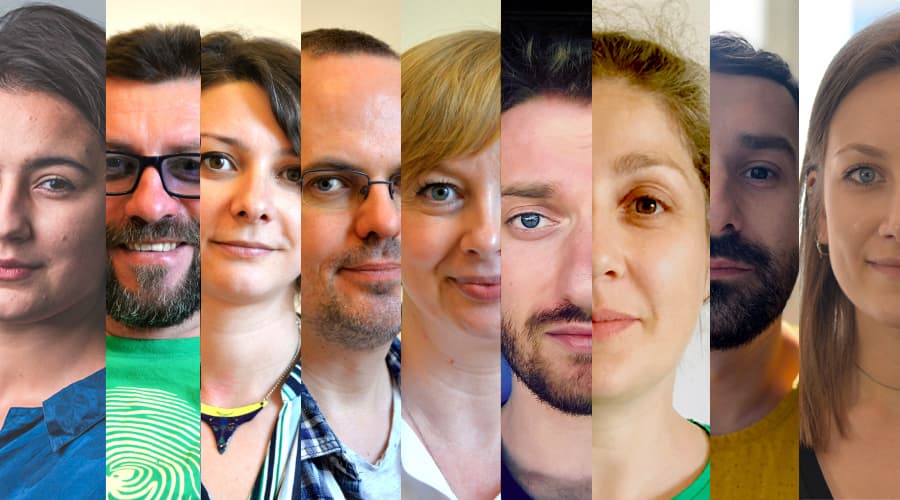
Avem nevoie de ajutorul tău!
Mulți ne citesc, puțini ne susțin. Asta e realitatea. Dar jurnalismul independent și de serviciu public nu se face cu aer, nici cu încurajări, și mai ales nici cu bani de la partide, politicieni sau industriile care creează dependență. Se face, în primul rând, cu bani de la cititori, adică de cei care sunt informați corect, cu mari eforturi, de puținii jurnaliști corecți care au mai rămas în România.
De aceea, este vital pentru noi să fim susținuți de cititorii noștri.
Dacă ne susții cu o sumă mică pe lună sau prin redirecționarea a 3.5% din impozitul tău pe venit, noi vom putea să-ți oferim în continuare jurnalism independent, onest, care merge în profunzime, să ne continuăm lupta contra corupției, plagiatelor, dezinformării, poluării, să facem reportaje imersive despre România reală și să scriem despre oamenii care o transformă în bine. Să dăm zgomotul la o parte și să-ți arătăm ce merită cu adevărat știut din ce se întâmplă în jur.
Ne poți ajuta chiar acum. Orice sumă contează, dar faptul că devii și rămâi abonat PressOne face toată diferența. Poți folosi direct caseta de mai jos sau accesa pagina Susține pentru alte modalități în care ne poți sprijini.
Vrei să ne ajuți? Orice sumă contează.
Share this


